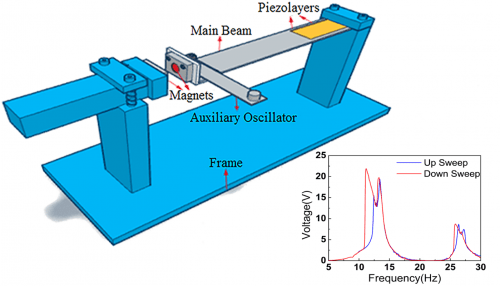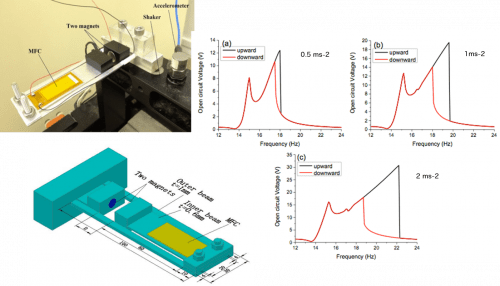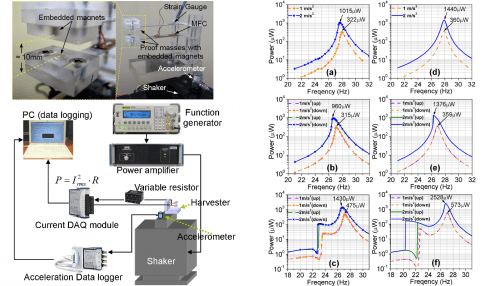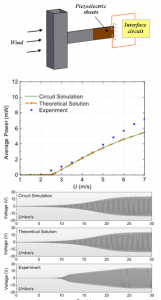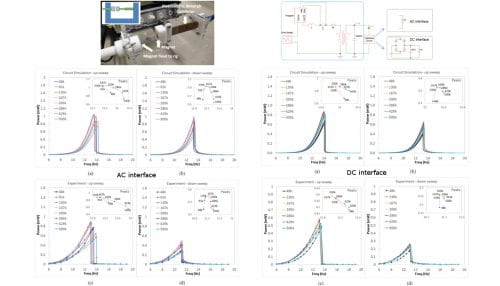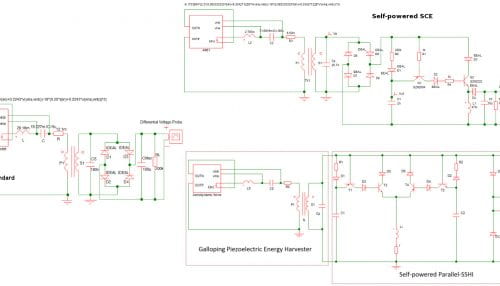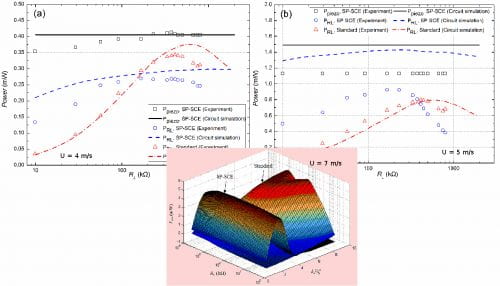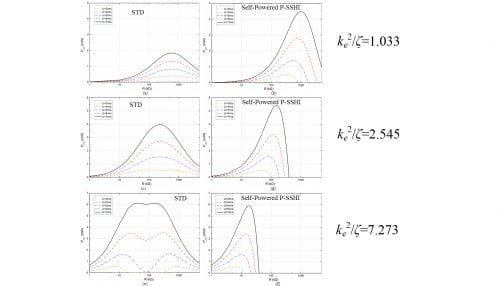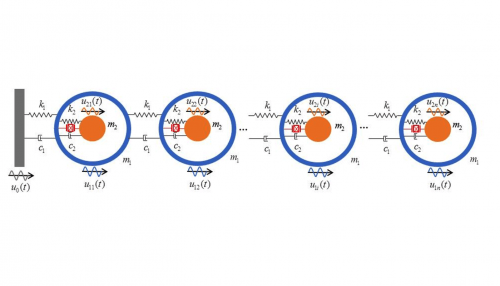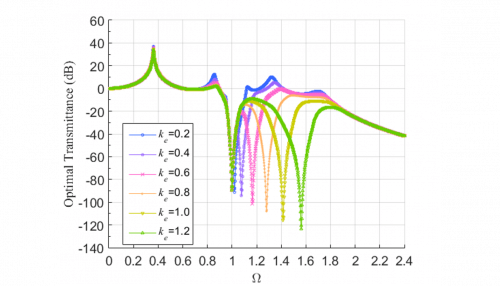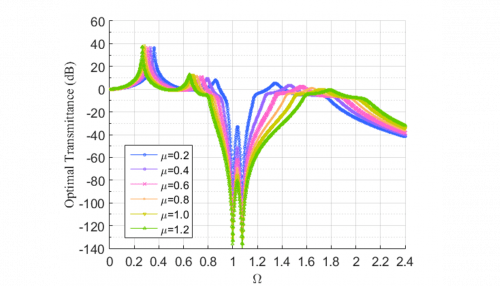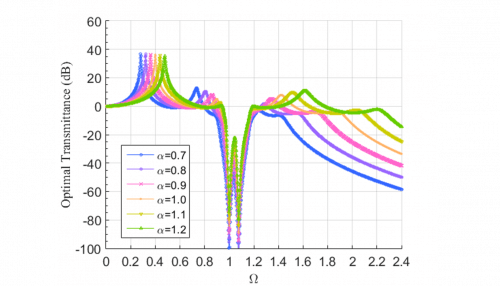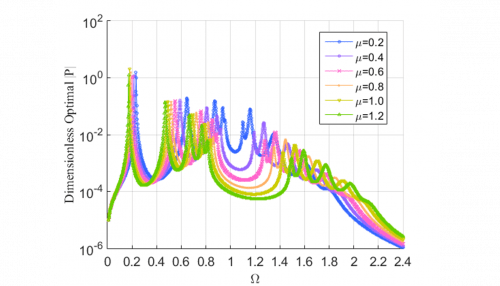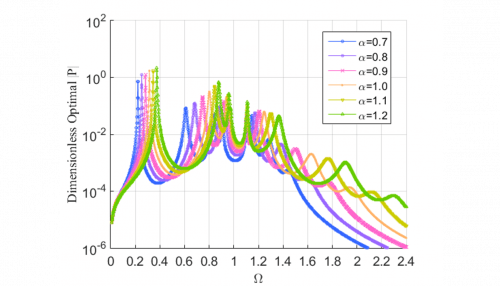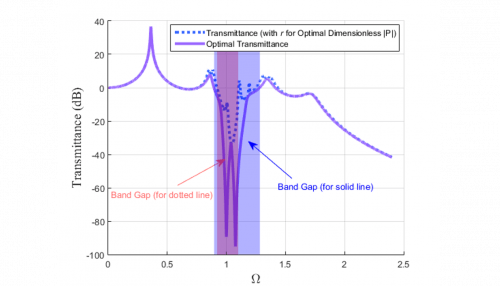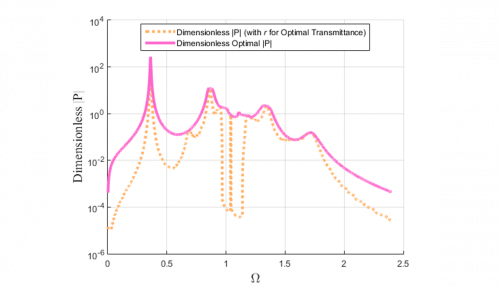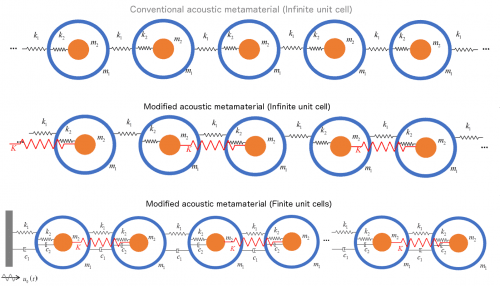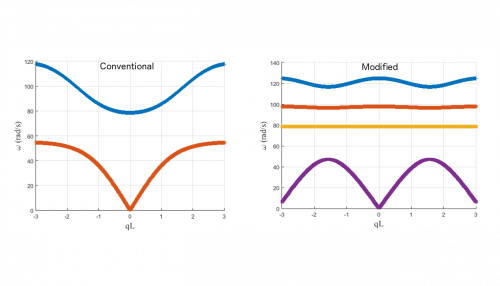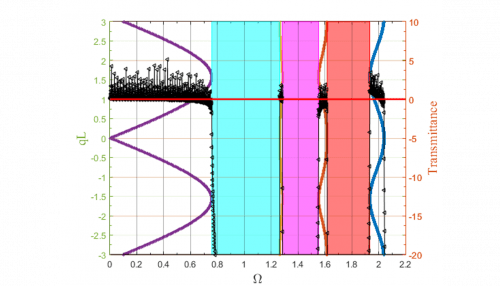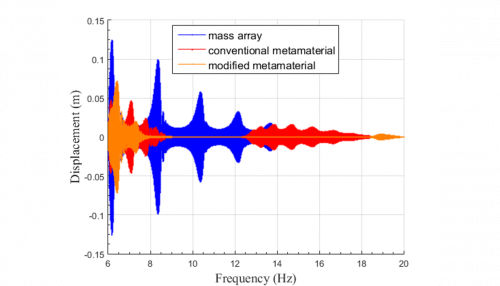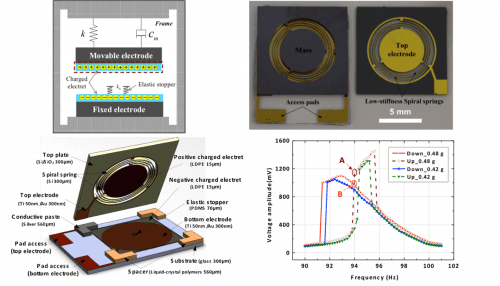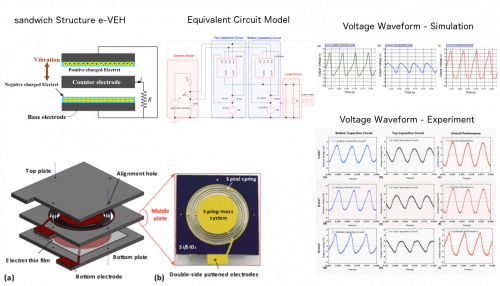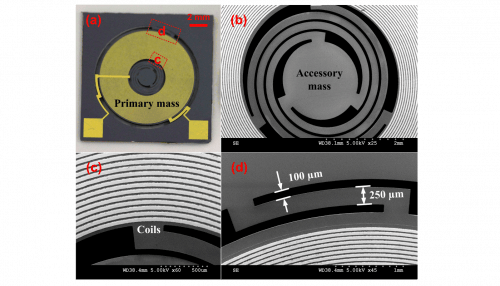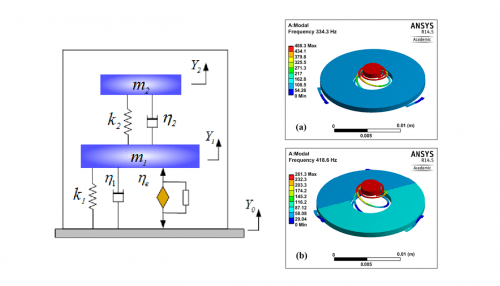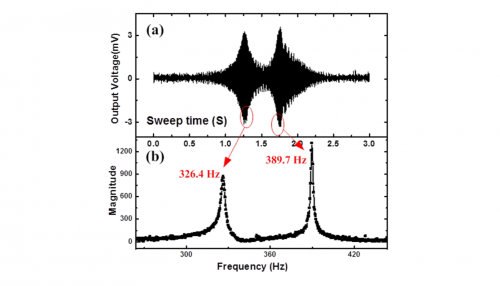Energy Harvesting
Elastic/Acoustic Metamaterials
|
Simultaneous Vibration Control & Energy Harvesting Acoustic metamaterials (to be specific, locally resonant phononic crystals) are some “engineered” material/structure systems with intentionally designed microstructures (local resonators). By integrating the piezoelectric element, acoustic metamaterials are empowered with dual functions: energy harvesting and vibration suppression. A unique double-valley phenomenon is found given a strong electromechanical coupling, which benefits a wide band gap – a frequency range where vibration is suppressed. Energy harvesting and vibration suppression, however, cannot be optimized concurrently and certain compromise is required in mechanical parameter design as well as impedance matching strategies. |
|
|
Band Gap Control By simply connecting the local resonators alternately in the acoustic metamaterials, multiple band gaps present, which could significantly enhance the broadband wave filtering performance in the low frequency range. Band structure analysis based on Bloch’s theorem, transmittance analysis and numerical simulation confirm the existence of the multiple band gaps and the broadband vibration suppression performance of this new metamaterial system, superior to the conventional acoustic metamaterialss. |
Thermoacoustic Engine
|
Thermoacoustic Engine for Heat Energy Harvesting — |
coming soon |
|
Synthetic Jet Driven by Thermoacoustic Engine for Self Thermal Management — |
coming soon |
MEMS
|
MEMS Electret Vibration Energy Harvester The electret has been widely used as a capacitive sensor for pressure and vibration sensing with high sensitivity and accuracy. In recent years, electret film has also been employed to harvest mechanical energy via the electrostatic principle. The existence of “trapped” permanent charges in the electret film eliminates the requirement of external voltage or charge source which is indispensable in conventional electrostatic energy harvesting devices. (collaboration with Micromachines Centre @ NTU) |
|
|
MEMS Electromagnetic Vibration Energy Harvester A MEMS version of 2DOF energy harvester is designed, modeled and tested. The parameters of the parasitic oscillator are properly tuned to ensure two significant resonant peaks. The coil is patterned and deposited on the primary oscillator which cuts magnetic flux and generates electricity. (collaboration with Micromachines Centre @ NTU) |
